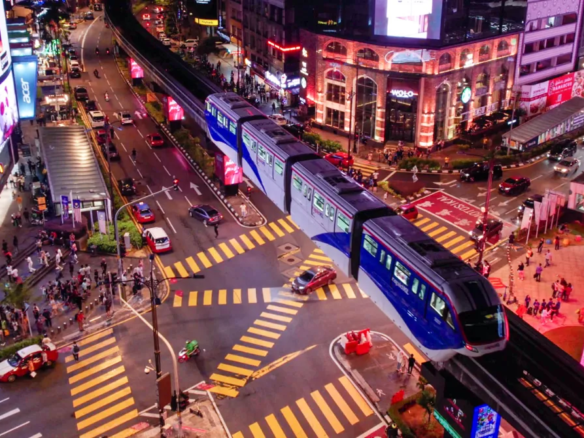Pavilion REIT’s Outlook: What Rising Costs Mean for KL Retail Property Investors
As one of Malaysia’s most prominent retail-focused real estate investment trusts, Pavilion REIT continues to show solid performance in a changing economic landscape. While rising operational costs and macroeconomic uncertainties could weigh on margins moving forward, Kuala Lumpur’s strategic significance in both retail and digital infrastructure sectors keeps the city firmly on the radar of savvy property investors.
Stable Revenue, Rising Pressure
Pavilion REIT recently posted an 8.2% increase in net property income (NPI), driven by stronger performance at Pavilion Bukit Jalil and advertising gains at Elite Pavilion Mall. With a 6% boost in quarterly revenue, the trust continues to enjoy the benefits of high footfall and premium tenancy profiles across its shopping malls.
However, the road ahead may not be entirely smooth. The REIT manager has warned of margin pressure due to a combination of:
-
Higher service taxes on commercial rentals
-
Minimum wage increases
-
Ongoing subsidy rationalisation measures
These challenges are not unique to Pavilion REIT—they reflect broader structural shifts in Malaysia’s commercial real estate environment.
Kuala Lumpur Retail Still Holds Strong
Despite these economic pressures, Kuala Lumpur remains one of the most resilient retail markets in Southeast Asia. Locations such as Pavilion KL Mall, Pavilion Bukit Jalil, and Intermark Mall are more than just shopping destinations—they serve as social hubs for both locals and tourists. These malls benefit from:
-
High pedestrian traffic
-
Premium brand tenants
-
Proximity to public transport and key business districts
Additionally, the integration of lifestyle and hospitality elements (such as Pavilion Hotel and Banyan Tree Kuala Lumpur) reinforces the value proposition of mixed-use developments in the capital.
This multi-dimensional positioning helps buffer against short-term shocks, making these assets attractive even amid rising operational costs.
Bridging Retail with Malaysia’s Digital Ambitions
An often-overlooked angle is how data center infrastructure and smart city development will affect the commercial real estate landscape—especially in Kuala Lumpur. With the government actively developing a data center framework and promoting AI-powered urban infrastructure, properties with advanced digital connectivity will soon command premium value.
For instance, malls that incorporate:
-
Smart tenant analytics
-
Integrated digital advertising platforms
-
Seamless logistics support for e-commerce partners
…are better equipped to attract future-ready tenants, especially as the retail sector blends physical experience with digital engagement.
Property Investor Takeaway: Look Beyond Short-Term Volatility
While Pavilion REIT’s quarter-on-quarter NPI dip of 9.1% may raise eyebrows, it reflects seasonal trends and minor cyclical fluctuations more than structural weakness. In fact, the 6.5% year-on-year growth in NPI for the first half signals long-term stability in KL’s retail property sector.
For investors focused on capital appreciation and steady yield, especially in times of inflation or cost hikes, REITs like Pavilion continue to offer a balanced exposure to:
-
Prime retail locations
-
Diversified tenant mix
-
Professionally managed assets
When paired with the broader digital transformation sweeping across KL—including upcoming data centers and AI-driven infrastructure—these investments could benefit from stronger valuation tailwinds.
Pavilion Bukit Jalil: A Case Study in Expansion
Among Pavilion REIT’s portfolio, Pavilion Bukit Jalil stands out for its growth momentum. It has emerged not only as a retail anchor in the southern corridor of Kuala Lumpur, but also as a platform for high-margin advertising and exhibition revenue—both of which contributed significantly to the latest earnings uptick.
This signals a strategic pivot: malls are no longer just about leasing space, but about creating experiential platforms for brand engagement. Properties that tap into event marketing, pop-up commerce, and data-driven footfall analytics are ahead of the curve.
As this mall continues to attract both lifestyle tenants and tech-forward concepts, its surrounding real estate—including residential and commercial lots—is likely to see a boost in demand and value.
What to Watch: Investor Confidence in KL’s Real Estate Ecosystem
Pavilion REIT’s current unit price and distribution reflect the market’s cautious but steady confidence in KL retail. With a market capitalization of RM6.71 billion and consistent distribution payouts, it remains a bellwether for investor sentiment.
However, as investors look ahead, they should also consider the cross-sector synergies emerging from Malaysia’s digital economy push:
-
Demand for data center-compatible land
-
Uptake of commercial spaces near AI-enabled zones
-
Value appreciation in transit-oriented developments (TODs) linked to smart infrastructure rollouts
Final Thoughts: A Market in Transition, Not Decline
Yes, rising wages and taxes are squeezing margins. But Malaysia—and Kuala Lumpur specifically—is not retreating from growth. It’s recalibrating. Pavilion REIT’s performance shows the strength of anchor retail assets even amid change. When viewed in tandem with emerging digital infrastructure, these real estate holdings form part of a resilient, hybrid ecosystem.
Looking Ahead: Retail Meets Digital in KL
The next wave of property value in KL will come from the intersection of lifestyle, technology, and connectivity. As data centers rise and AI guides city planning, smart malls and connected properties will see stronger rental profiles and investment appeal.
Whether you’re a seasoned investor or just exploring the market, Kuala Lumpur’s retail real estate—especially those tied to evolving infrastructure—presents a compelling opportunity.



